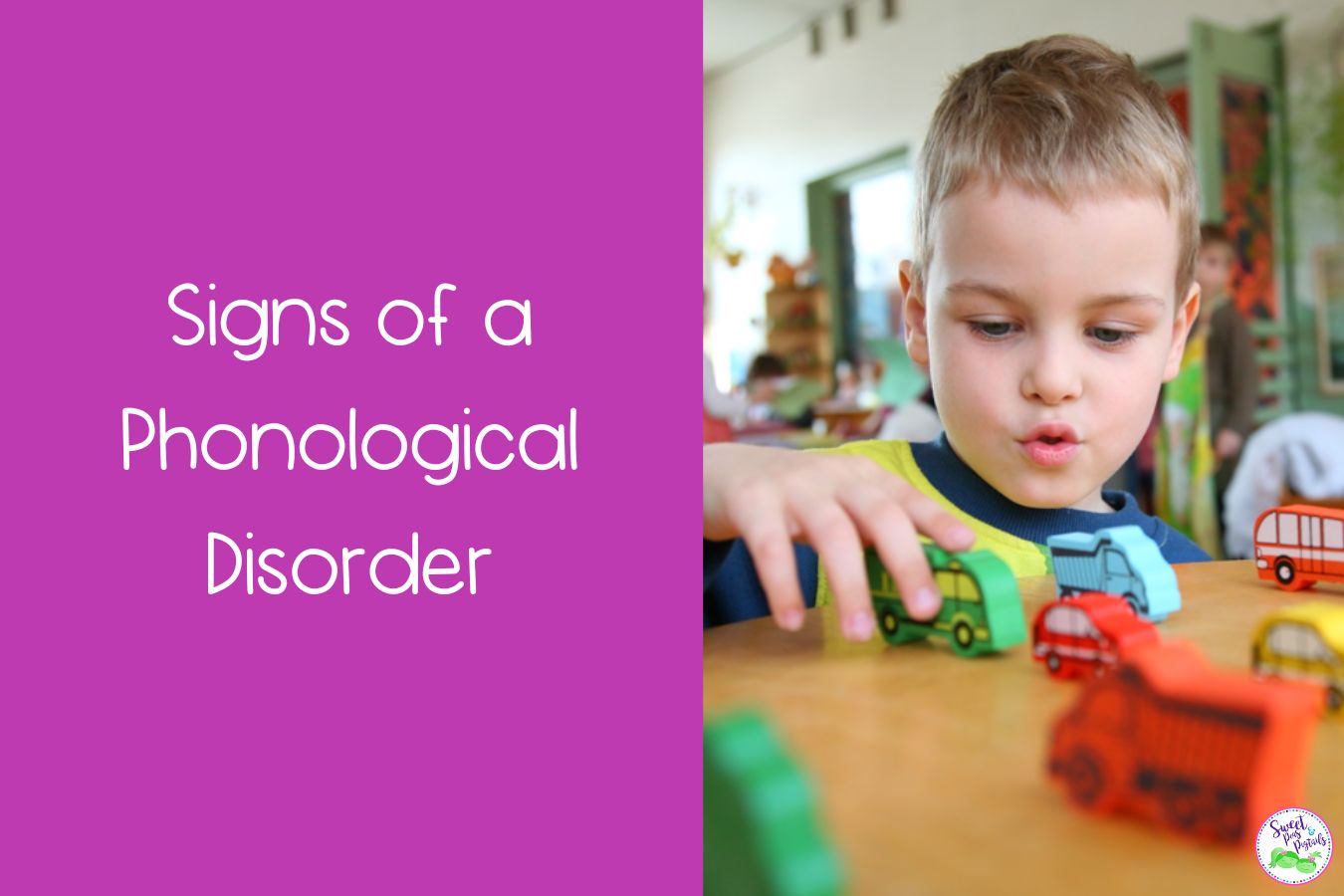

When I assess a child’s speech, I not only look at his or her articulation errors but also their sound pattern errors. As children learn to talk, they use these patterns of sound errors called phonological processes to simplify speech. For example, you might hear your child say “da” for “dog”, “geen” for “green”, or “dob” for “job”. They do this because they can’t coordinate their articulators (lips, tongue, teeth, palate, and jaw) for clear speech. They often simplify the adult model by substituting sounds that are in their sound repertoire for sounds that they haven’t yet mastered. There are many different patterns of simplifications or phonological processes.
What’s a phonological disorder?
These processes are totally normal unless they continue beyond the age when most typically developing children have stopped using them. An example would be if your 4 year old deletes the ending sounds on words (“toe” for “toad”), which is the processes of final consonant deletion. This would be considered delayed because we expect children to stop using that process around 3 years of age.
Check out my phonological process chart which describes each process and provides an approximate age of mastery by downloading it here. (INSERT PDF HERE)
So, how can I tell if my child has a phonological delay or disorder?
If you have concerns, be sure to get your child assessed by a licensed speech-language pathologist (SLP). He or she will evaluate your child’s speech using a standardized assessment. Some red flags to be on the lookout for include:
1. How intelligible is your child?
When children use an excessive number of phonological processes, a phonological disorder is highly likely. If they delete final consonants (“be” for “bed”), delete cluster sounds (“poon” for “spoon”), stop sounds (“poo” for “zoo”), etc. their intelligibility is going to suffer. By the time a child is 2 years old, they should be about 50% intelligible to others. When they are 3 years of age, the percentage increases to about 75% to an unfamiliar listener, and by 4-5 years they should be approximately 90-100% intelligible even if they still have a few articulation errors.
2. Are they deleting initial sounds of words?
The phonological process of initial consonant deletion is not a common one. If you hear your child say “up” for “cup”, “oap” for “soap”, or “ed” for “bed”, you may want to consult a SLP.
3. Is your child frustrated when someone does not understand him/her?
What happens if my child has a phonological disorder?
If your child is diagnosed with a phonological disorder and the speech pathologist recommends speech therapy, the SLP will work on the specific process or processes in error, which will help improve your child’s intelligibility. Targeting the process instead of the individual sound error as you would in articulation therapy usually helps improve the child’s intelligibility at a faster rate if indeed they have a phonological disorder. For example if I assessed a child who deleted final consonants, my therapy goal would probably look something like this:
Patient will produce final consonants on words with 80% accuracy over 3 consecutive sessions.
To target this goal, I’d probably use minimal pair (words that differ in only one phonological element) picture cards like go/goat, bow/boat, bee/beep, etc. and have the child first identify the pictures to see if they can hear the difference and then we’d work on production. After laying out a pair of cards, say the pictures of “go” and “goat” in front of the child, I might say, “Ok Johnny, you tell me which picture to point to.” Then I’ll point to the picture he says. Obviously if he deletes final consonants, he’d probably say “go” for “goat” but then that is where I’d show him what to do to produce that final sound and say “goat”. You want the child to understand that when they say the sound incorrectly (or omit a sound), it actually changes the word’s meaning.
Well that’s phonological processes in a nutshell. Again, if you have concerns about your child’s speech, please consult a SLP near you!
